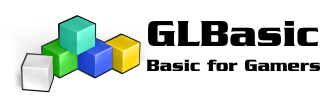It's even more amazing how such simple games can attract huge amounts of money, too! 
It's totally mindblowing, having $0.99 app selling by hundreds of thousands, even millions. Promised land for everybody, really.
It's just a bit problematic to get noticed there, but once you are seen and have a decent game at least - capitalism works its magic!
Anyway, I radiate motivational waves from my brain towards Germany.... make iPhone compiler..... make iPhone compiler.....

It's totally mindblowing, having $0.99 app selling by hundreds of thousands, even millions. Promised land for everybody, really.
It's just a bit problematic to get noticed there, but once you are seen and have a decent game at least - capitalism works its magic!
Anyway, I radiate motivational waves from my brain towards Germany.... make iPhone compiler..... make iPhone compiler.....


 ). I may go for a "hybrid" approach to this. I think I'll spread the terrain into smaller tiles, ie. 128x128 or 64x64, and then on top of that do what you suggested in the firs reply - draw various objects on screen as they appear (trees, pillars, etc).
). I may go for a "hybrid" approach to this. I think I'll spread the terrain into smaller tiles, ie. 128x128 or 64x64, and then on top of that do what you suggested in the firs reply - draw various objects on screen as they appear (trees, pillars, etc). ) and with BASIC being the only language I ever managed to turn into something meaningful.... if I come on with some obviously stupid programming questions, don't go hard on me, please.
) and with BASIC being the only language I ever managed to turn into something meaningful.... if I come on with some obviously stupid programming questions, don't go hard on me, please. 